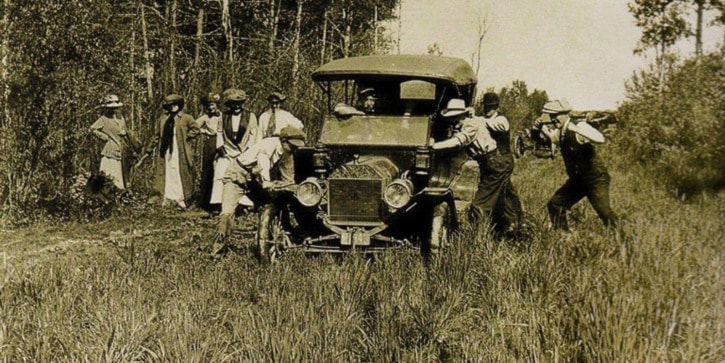In this day and age, I really wonder what we would ever do without our automobiles and assorted toys. Whether we may possess a classic top of the line model, one of those roaring diesel monsters, or just a plain old reliable family car or pick-me-up truck, we depend on them a whole lot, and some folks have a garage full.
The humble beginnings of the auto era
Even as far back as the 1700s, Nicholas Joseph Cugnot had developed a steam powered auto that was capable of transporting humans, but very slowly and in a thick cloud of smoke. Moving on to 1807 and François Isaac DeRivaz unveiled the first combustion engine fueled by hydrogen; then in 1886, the big break through into the next exciting automotive era came with Karl Benz’s first petrol or gasoline powered vehicle known as the Motorwagen, which was certainly a strange looking contraption.
At the turn of the 20th century, someone actually came up with a vehicle powered by electricity, but that didn’t last very long as the massive worldwide production of all sorts of automobiles, tractors, motorcycles and everything else that could be powered to move forward or backward had begun. The magnificent lines of the first Model-T Ford took the nation by storm, and were soon joined on the few rough and dusty roads by Austin, Dodge, Chevrolet, Rolls-Royce, Mitsubishi of Japan and countless other new models in a wild rush of buyer frenzy and the overwhelming need for added highways and by-ways to accommodate them all.
From peaceful Chipman to the roaring 20s
When Ponoka officially became a vibrant little town in 1904, the streets were busy every day with new citizens on foot or arriving on horseback or by horse and buggy and wagons delivering the fruits of their labour and picking up vital supplies for the month ahead. Later, they likely dropped into one of the many livery stables to tend to their animals, while possibly stopping to warm up or socialize at the local hotels, restaurants or ladies rest room. But all that would change in a few years with the daily arrival at the local CPR station of the automobile, which many of the early pioneers first looked upon as a noisy, expensive and clearly dangerous toy. The introduction of the ‘Automobile Act’ in 1906 featured a license fee of $10 as well as a dollar a year for plates. This new ‘auto mania’ caught on quick and by 1910, almost 700 excited Albertans owned some sort of a new automobile. Among the first proud owners of one of those flashy new cars in the rural and urban areas of Ponoka were Walter Gee, with his 1914 Overland Convertible, which was really popular with the ladies; Roy Flegal, and L.A. Sweet, and the list of proud owners grew as quick as you could say ‘crank her up.’
By 1911, a total of 1700 vehicles had been registered, half of which were in Calgary, prompting The Calgary Herald to label them as poetry in motion and the ideal mode of future travel. On the other side of the media hype, Bob Edwards, the flamboyant but crotchety editor of the Calgary Eye Opener wrote that he wanted them banned from the local parks so that the families would not have their humble pleasures spoiled by the selfishness and arrogance of these automobile fatheads.
Back in bustling Ponoka, and in all communities throughout the province, the popular livery stables were soon being replaced by the garages that would soon be selling and maintaining these ongoing models of four wheeled marvel, that came in all shapes and sizes as they roared into the 1920s. Mr. Henry Taylor likely had the first real garage at the north end of Railway Street, and when he set up shop in 1916, the local folks really wondered what this business was all about. Some of the countless early local garages, dealerships and much needed body shops were run by Bert Pendleton, Mr. Neff the Jeweller, George N. Field (who also put in the first gas pumps), Skinner and Wilkinson, Skinner and Labrie, Jack Wilders, George Loucks and so many others. Through those wild and wacky decades of so many new and modern inventions of transportation, it soon became a mad-mad-world of fancier and faster vehicles and toys that created a mechanic’s nightmare that would never slow down.
As traffic increased along the new Calgary and Edmonton trail, into the communities, and out into the country, the rough corduroy roads became even more dusty and dangerous, and there were many accidents and breakdowns along the way. Way back then, when those cars or trucks got stuck, broke down, crashed or froze up, there was always a kindly neighbour or farmer there to help, and isn’t it totally ironical that in so many cases these powerful new vehicles were usually had to be pulled out of the ditch, the mud, the snow, or the river by a tractor or a trusty old team of horses?
